Whims of Fate Reforged, Part 1
Welcome to the first Fate Reforged Preview Week. This week, it's time for us to start talking about the second set in the Khans of Tarkir block. How did it get designed? What about it makes it the most different second set of all time? How exactly does it tie into what began in Khans of Tarkir? I will begin to answer these questions today as well as introduce you to a new card, complete with a new mechanic—one at the heart of the design. Hopefully, all that sounds fun.
Fate Weavers
Before we get to how, I'm going to start with who. The following six people (plus one—you'll see) formed the design team for Fate Reforged:

Ken Nagle (lead)
As you are about to learn, Fate Reforged was a complex design, as it was the pivot that the entire block design leaned upon. It was the set that was going to work with two different large sets in two different Draft environments. Traditionally, the second set is the easiest of the block, in that it can stay the closest to the first set, letting the third set veer farther off the path, but Fate Reforged was no ordinary second set. This meant I needed my best designer on the task.
Every time I introduce Ken, I reminisce about how he has gone from being the brash young intern to one of the veterans of the design team. I knew Fate Reforged was going to be tricky to design, but I knew Ken was up to the challenge. As expected, he didn't disappoint and crafted a set worthy of being the pivot point of the entire block.
One of the things I have always admired about Ken, even going back to the original Great Designer Search, is that he never backs down from a design challenge. He doesn't ask if something could be done, but rather figures out how it can be done. Ken is great at identifying problems and then searching until he finds the ideal solutions. As you will see, he pulled this off once again with Fate Reforged.
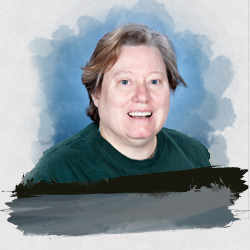
Jennifer Clarke Wilkes
In all of R&D, only three people have worked at Wizards longer than I have. Bill Rose (the vice president of R&D), Charlie Catino (director of Duel Masters R&D—the equivalent of Aaron Forsythe for that brand), and Jennifer Clarke Wilkes. Back in the day, Jennifer was one of the editors who worked on Magic. She and I used to work closely together on the flavor text for sets back in the late '90s. Since then, she has worked primarily as an editor on Dungeon & Dragons, but she was interested in spending some time working on the Magic creative team . She had a great time jumping in to the world of Magic after a fifteen-year hiatus.
Jennifer served as the creative team representative for the team. Usually, the creative team has a representative on large sets. But because Fate Reforged played such a crucial role story-wise, it was decided she would be of value on the team, and she was. Coming from an editing background, Jennifer has a great eye for detail and was good at making sure that everything the set was doing was lining up with the world we'd crafted. As you'll see, just as Fate Reforged had some mechanical issues to be addressed, so too did it have creative ones. It was fun getting a chance to work with Jennifer again after so many years.
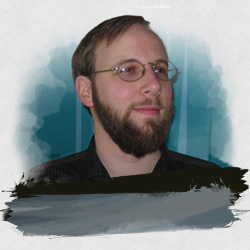
Ethan Fleischer
Ethan's first expansion design lead was Journey into Nyx. His second will be "Sweat," the January 2016 small set that is going to follow "Blood," the October 2015 large set ("Blood" and "Sweat" will be the first block in the Two-Block Paradigm.) In order to start prepping him for his first second-set design, Mark Gottlieb (the design manager) and I thought it would be good for him to serve on a second set as a design team member. This would give Ethan another hands-on approach with a second set (he was also on the design team for Born of the Gods, which Ken also led).
Ethan was the person who came up with the time-travel structure during exploratory design that we ended up building the Khans of Tarkir block plan around, so it only seemed appropriate to toss him into the set that served as the crux of the entire block. Ethan, Shawn Main, and I had spent a lot of time on the block's structure (more on that in a minute), so I was happy to have Ethan on the design team. Ethan is a very inventive designer who always finds ways to tackle problems that no one else has thought of, so he was a perfect fit for a set built around solving a big puzzle.
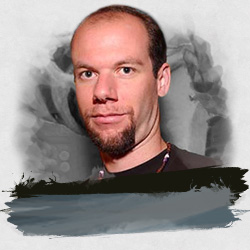
Dave Humpherys
Dave was not only the development representative on the design team, he was also the lead developer for Fate Reforged. Every R&D member has his or her quirks, and Dave likes being on the design team of sets he's going to lead. It allows him to get into the mindset of the lead designer and understand what exactly the design team was up to.
A member of the Pro Tour Hall of Fame, Dave is one of the best players in R&D and has a great insight into what mechanics will and won't work in development. Not every crazy idea can be developed, and Dave's job on the team was making sure that the answers we found for our problems really worked. Dave has a very analytical mind and added a nice mix to the makeup of the design team.
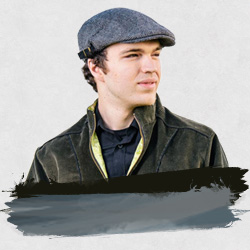
Gavin Verhey
Gavin is on the design team specializing on what we refer to as branded play. That is the play experience that surrounds things like the Prerelease, Launch Weekend, and Game Day. He was on the team to be able to get a good sense of what the set needed out of branded play. In addition, Gavin has proven a very worthwhile designer, always creating a slew of new card designs, many of which you all will luckily get to play.
My favorite thing about having Gavin on the team is that he brings with him a wondrous sense of optimism. Gavin is a happy guy and he always brought that sense of joy to the design. No matter what design challenge you throw at Gavin he always comes back with a smile and a list of new cards.
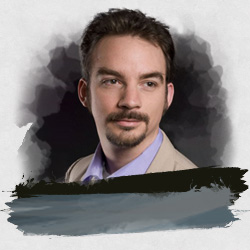
Shawn Main
Shawn wasn't actually on the Fate Reforged design team, but he was an important part of the exploratory design team (along with Ethan and myself), so I felt it was important to give him props here as well. As you will soon see, the exploratory design team had a big role in how Fate Reforged turned out.
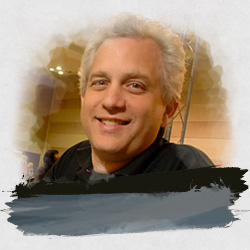
Mark Rosewater
And then there's me. I'm on all the design teams to keep abreast of what's going on and add my expertise when I can.
Time After Time
The story of Fate Reforged's design starts long before the design team was assembled. During exploratory design, I asked the team to come up with an explanation for why the middle small set would be drafted with each large set. Ethan and Shawn came up with numerous ideas but one really stuck with me—we could tell a time-travel story. And not just any time-travel story, but an archetypal one.
Our protagonist, a Planeswalker of course, would come to the world. He or she finds the world inherently flawed. When the Planeswalker is presented with the opportunity to go back in time, he or she takes it, hoping to affect the past and forever change the present. The Planeswalker's actions lead to a changed present: the second large set, Dragons of Tarkir (more about that set when we get to the previews).
Why does the middle set play with both large sets but they don't play with each other? Because the large sets represent alternative timelines. The middle set, representing the past, is the precursor to both. This means that the middle set was all about being the fulcrum of the story. Fate Reforged takes place more than a thousand years in Tarkir's past and the future of the world, in this case quite literally, hangs in the balance.
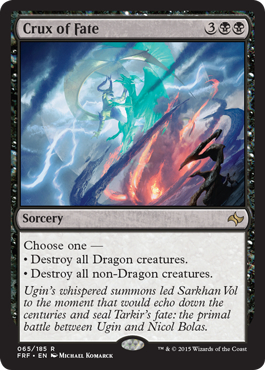
For Fate Reforged, that meant a couple things. First, the set had to be designed so it worked mechanically with both Khans of Tarkir and Dragons of Tarkir. While I cannot say what Dragons of Tarkir is up to just yet, I can say that it is very different from Khans of Tarkir. This means that the set had to live in a space where the same cards had to play nicely with two very different large sets. Second, there is an important story that had to be told. Both Khans of Tarkir and Dragons of Tarkir had to be worlds that could grow out of Fate Reforged. That means we had to mechanically design a set that could evolve into either choice.
Traditionally, the role of the second set has been to follow up the first set and not make too many waves. Any turmoil was usually saved for the third set. Khans of Tarkir block has turned conventional wisdom on its ear. The second set has gone from being "the easy one" to being the most complex set of the block, one with a lot of moving pieces. As I said above, this is why I chose Ken to lead this design. It was going to be a doozy.
About Face Down
Remember that when we were doing block planning, we didn't know the details. We didn't know who the protagonist was going to be or what world he or she was going to visit. All we knew was:
Set 1: World in Trouble
Set 2: That World's Past at the Time When Some Crucial Event Occurred
Set 3: The Alternative Timeline of the World
We worked with the creative team to fill in all the blanks. Sarkhan, Tarkir, the warlords, the dead dragons—that was all chosen by the creative team. Our job was to build a mechanical infrastructure that held it all together. That meant that when the exploratory design team was working on the original block plan we didn't have the clans or wedges yet. We also didn't know…well, "the thing that's important to Dragons of Tarkir" yet.
So we started with a very different focus—a mechanical one that could represent the time-travel structure we were creating. To do this, we needed a mechanic, what I'll call Mechanic X. But not just any mechanic, one that would allow us to tell our time travel story. Here's what Mechanic X needed:
Set 1: The mechanic would just do its thing.
Set 2: We could create a proto-version of the mechanic. Something that felt like it existed before the mechanic in Set 1.
Set 3: We see the mechanic from Set 1 but not quite the same, because things went a little differently in this timeline.
The big challenge was the need for Set 2. The proto-mechanic had to feel like a devolution but still had to feel fresh and new. It couldn't just be a simpler version of the mechanic in the first set, it had to be its own thing. I knew if the exploratory design team was going to crack this, we had to figure out the Set 2 mechanic. To do this, we had to start with the right mechanic in Set 1. It had to be something cool unto itself but open enough that it would allow us to find a connected mechanic to work as our proto-mechanic.
One day, I came in and said to Ethan and Shawn that I thought I had an idea for the first set's mechanic. It was something I felt would fit our needs. All Ethan and Shawn had to do was find the proto-version. The mechanic was, of course, morph.
I liked morph for a few reasons. One, it was a mechanic with enough different elements that we had a lot to work with. Two, the mechanic had a sense of intrigue, which I felt had a good chance to work in the time travel story we were setting up. Three, we had been looking to bring back morph and I knew that if we were going to do it, it was a complex enough mechanic that we'd have to build the block around it. Mechanic X would also need to have the block built around it. Two birds, one stone.
The exploratory team examined morph from every angle. It looked at what other card types could have morph (something Future Sight had dipped its toe into). They looked into different ways morphs could be played face-down. They examined different costs for morph (this leads into a story which will get its own article one of these days.) Finally, they examined what could be done with face-down cards.
It was this last area that proved the most fruitful. The game defines face-down cards as colorless 2/2 creatures. Morph was the only mechanic that got cards into a face-down state (there are some individual cards that could do it) but it didn't need to be. Face-downness (hey, Shakespeare made up words) had a lot of potential.
The team explored every facet it could think of about face-down cards. In the end, we found a very cool mechanic called manifest (it was called "recruit" in design). In fact, before I continue with our story, why don't I show you my preview card today which, surprise, surprise, uses the manifest mechanic?
Meet Whisperwood Elemental and see what manifest does.

Manifest is an ability that allows you to take cards from different zones (although most often the library) and put them onto the battlefield face-down. Then if that face-down card is a creature underneath, you are allowed to turn it face-up for its mana cost. If that face-down card is a card with morph, you are also allowed to turn it face-up for its morph cost.
In design, I should point out, the ability only put cards face-down and it required the card to have morph to be able to get it face-up. It turned out that cards being morph cards was not high enough of a percentage and the gameplay didn't work out correctly so, during either late devign (when both design and development share the file) or early development, the mechanic was changed to allow you to turn creatures face-up for their mana cost.
The reason we liked manifest was threefold.
First, it truly felt like a proto-morph mechanic. Before there were creatures naturally with morph, there were spells that could, essentially, add morph to creatures. In the story, manifest is draconic magic that comes from Ugin. Later in the timeline, humans would warp the magic to allow them to use it to hide their identities.
Second, it felt like a new mechanic rather than just a redone version of morph. Manifest, for example, allows some different gameplay from morph. One of my favorite things about it is that it allows you to bluff on a different vector. Your opponent doesn't know what your morph card is or what its morph cost is, but he or she knows that eventually you'll be able to turn it up. With manifest, maybe it's a dangerous creature or maybe it's just a basic land. Who knows? Well, you do, but your opponent doesn't. It's great fun when your opponent destroys your face-down creature to learn it was…a Plains.
Third, manifest worked very well with morph. It's hard to completely surprise an opponent with a morph card. When you play it, your opponent knows it's a morph card. But with manifest, most face-down cards aren't morph creatures. When you turn one up with morph, it can actually catch your opponent off guard. I enjoyed how manifest takes morph and ups the gameplay, including bluffing, to a new level.
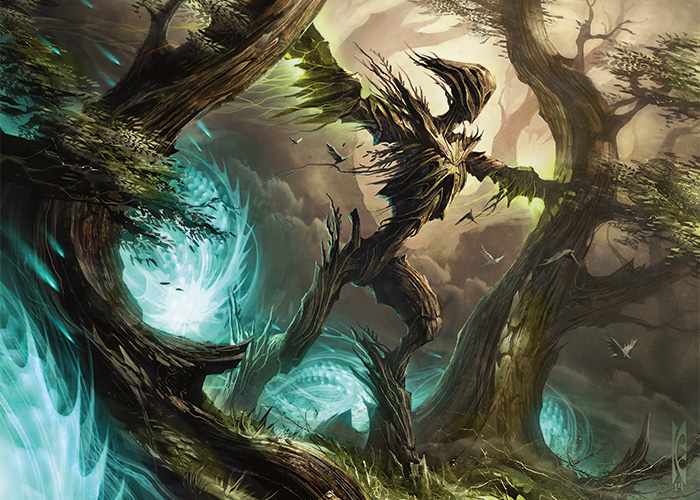
Whisperwood Elemental | Art by Raymond Swanland
After the exploratory team figured out the second set, it then found a way to do something interesting with morph in the third set. It turned out to cause a few problems that later had to get solved in Dragons of Tarkir design, but that's a story for Dragons of Tarkir preview weeks.
While exploratory design was going on, the creative team did get back to us about the world. The team knew we needed a plane that could have an interesting transition, so it offered up a warlord world that changes into…well, we'll get there soon enough. The warlord world came from Sarkhan's background, so it made sense for it to be his world and have him be the protagonist returning to it.
The world also needed to have various clans for the warlords to rule over. Being Sarkhan's world meant that it wanted to have a lot of Asian influences. Clans meant factions, so the creative team worked to come up with distinctive looks and feels for the various clans. All of this, by the way, was happening as the set was starting up design. We had the block structure the exploratory team had mapped out, we had our warlord world, and we had our clans—all of which the creative team had figured out. There would be four. Okay, time to start design.
"I Love it When a Clan Comes Together"
And that's where today's story ends. Hey it said "Part 1." You were warned. As always, I am eager for any feedback on today's article. You can email me or contact me through any of my social media (Twitter, Tumblr, Google+, and Instagram).
Join me next week, when we actually get to the start of design.
Until then, may there be bluff times ahead.

